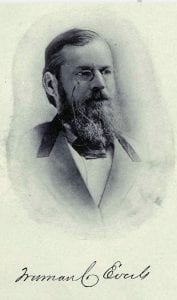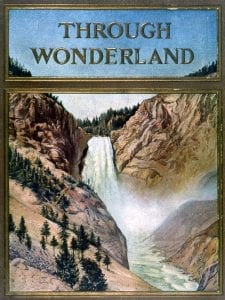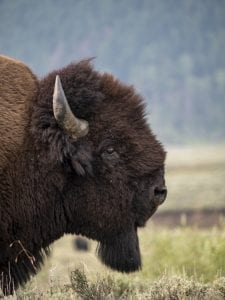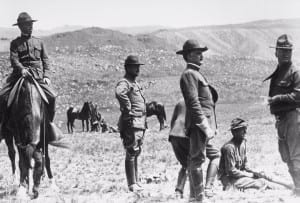We all know, or at least I assume most of us know, that Yellowstone is this Nation’s first National Park. However, there are some interesting things you may not know about this magnificent and amazing place.
STRANDED IN YELLOWSTONE:

Truman Everts
Did you know that one of Yellowstone’s earliest explorers was stranded in the park for 37 days? Organized surveys of the park did not begin until the late 19th century but miners and fur trappers ventured into Yellowstone in the years after John Colter’s visit but prior to the time the organized surveys began. In 1870 a 54 year old Montana bureaucrat named Truman Everts and his party were in the park. Mr. Everts became separated from his party. He lost his horse and most of his supplies. He spent over a month surviving on thistle and enduring snowstorms, delirium and a painful scalding from a hot spring. A $600.00 reward was offered for anyone who could locate him. He was finally found alive by a couple of locals in the northern reaches of the park in October 1870 and weighed just 90 pounds. He was suffering from frostbite so severe that his feet had been worn to the bone. His rescuers described him as looking like “nothing but a shadow”. He eventually recovered and wrote an account of this ordeal titled “Thirty-Seven Days of Peril.” Mt. Everts in the park is named for him.
IS THIS WONDERLAND:

Cover of the Northern Pacific Railraod Brochure “Through Wonderland”;
Artist unknown;
1910, 1927
Did you know that Yellowstone was originally nicknamed “Wonderland”? Due to the remote location, Yellowstone only received a couple of thousand visitors during the first several years of being a national park. This would all change dramatically after the completion of the Northern Pacific Railroad is 1883. At that time Lewis Carroll’s book “Alice’s Adventures in Wonderland” was popular. The Northern Pacific took advantage of this and started an ad campaign which referred to the park as America’s “New Wonderland”. In 1885 one pamphlet advertising the park included a fictional endorsement from Alice herself. The endorsement from Alice read in part “The Park, let me tell you is an extensive area literally crowded with natural curiosities of the most wonderful character. Tell me, is this not Wonderland.”
THE LARGEST BISON HERD:

Yellowstone Bison by Carolyn Fox
Yellowstone not only lays claim to being the “First National Park” but it also boasts of being home to the nation’s oldest herd of bison. According to the National Park Service, Yellowstone is the only place in the United States where buffalo have continuously roamed since the prehistoric era. The herd dwindled to just 23 animals during the late 19th century due to overhunting. This drove the bison to the brink of extinction. Thanks to more effective stewardship and protection the population eventually recovered. There are now roughly 5,500 bison that call Yellowstone home today and they constitute the nation’s largest and oldest free-range herd.
LUNCH TIME FOR THE BEARS:

Lunch Counter for Bears in Yellowstone
The park once had a “bear lunch counter.” For much of the early days of Yellowstone there were open-air garbage dumps in the park. These may have been a real eyesore but, they became popular locations for catching black bears and grizzlies in feeding frenzies. In the 1920’s and 30’s the park operators installed bleachers so the tourists could watch the bears feed. They even posted signs over the trash pits that read “Lunch Counter – For Bears Only.” During World War II the dumps were closed to the public but not before there had been several tourists injured in bear attacks.
THE ARMY AND YELLOWSTONE:

US Army in Yellowstone
The U. S. Army ran the park for over 30 years. In the early years, Yellowstone received meager government funding and had a series of not terribly effective superintendents. The park’s geysers and rock formations were vandalized by tourists and poachers and private interests hunted the wild game and harvested the timber. The damage was slowed in 1886 when a U. S. Army cavalry company was sent to administer Yellowstone and guard it’s natural treasures. These troops went to work immediately expelling squatters, rounding up poachers and enforcing regulations. By 1894 their successes had encouraged Congress to pass a new law protecting the park’s wildlife, The army forces would remain the wardens of Yellowstone until 1918 when the National Park Service was created.
AUTHOR: SUSIE KNAPP